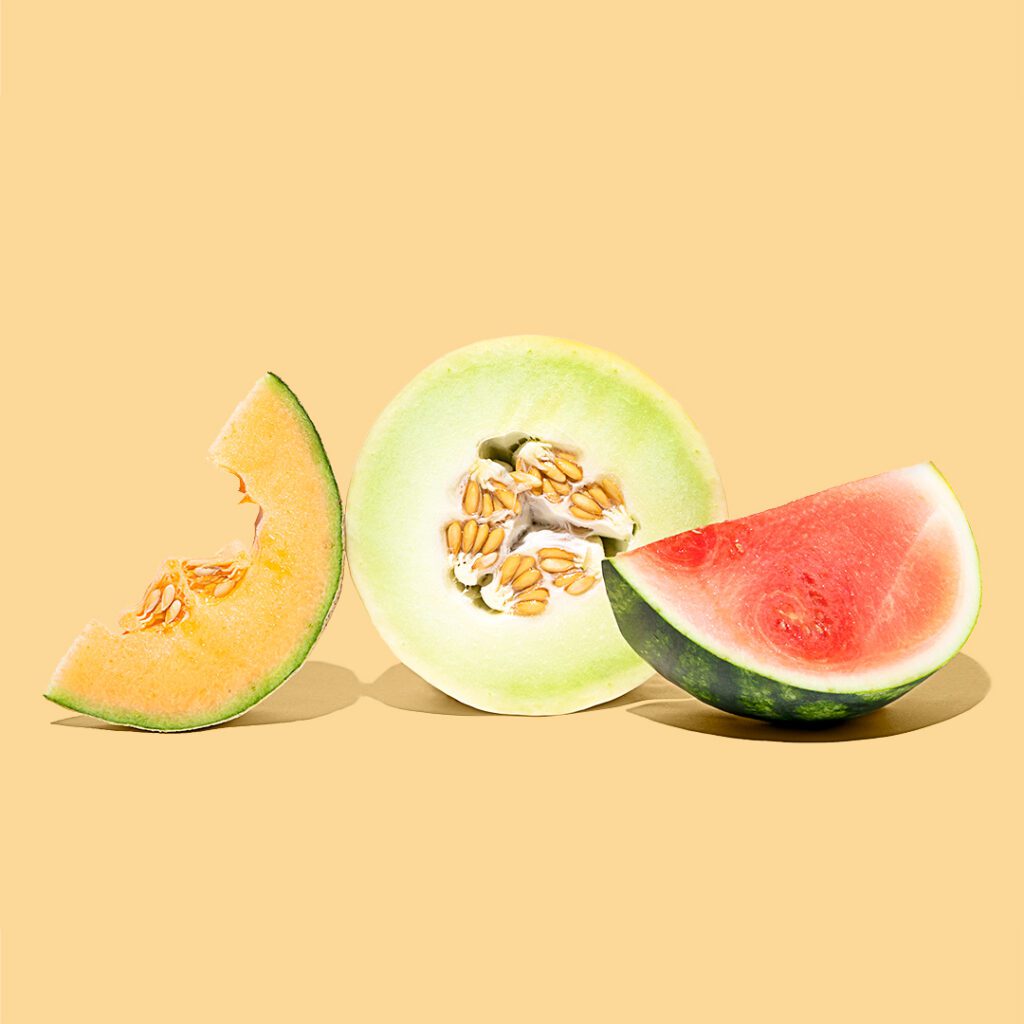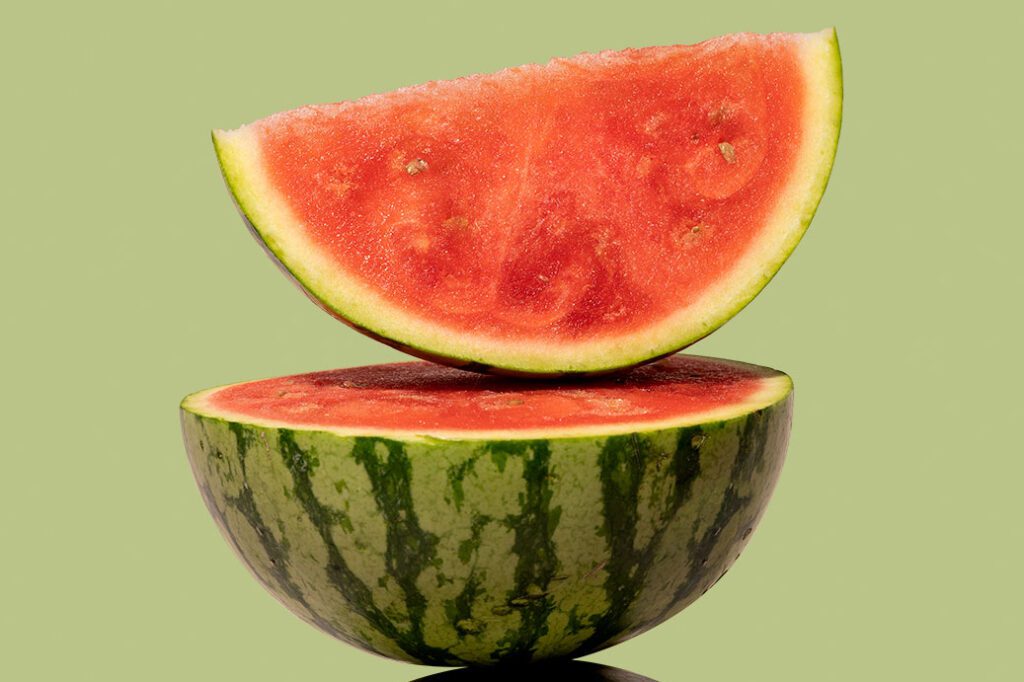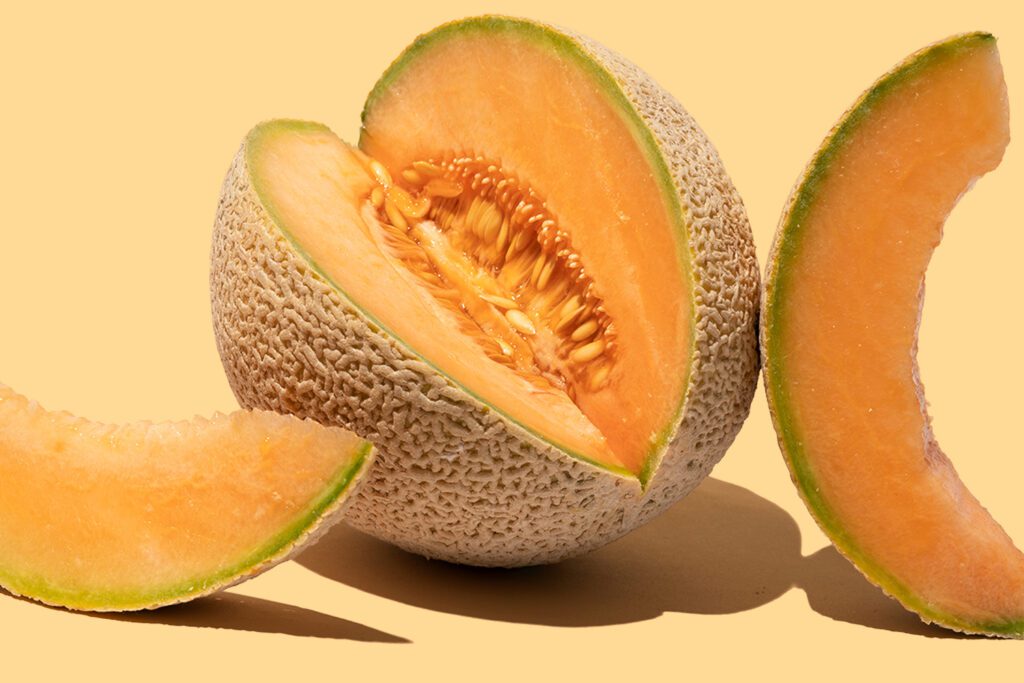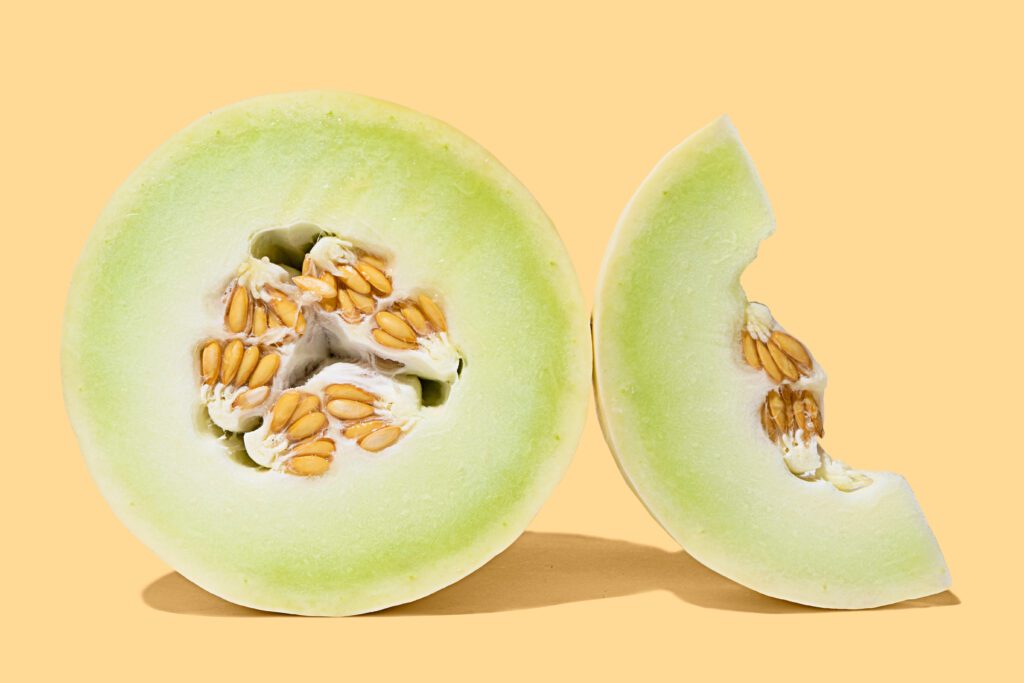
Whether you like ’em cubed, sliced, speared, or sphered (remember that melon baller you have hiding in a drawer somewhere?), we’re here to help break down the basics of watermelons, cantaloupes, and honeydews.

Watermelon
The Basics
Although they’ve only been on the scene since the early ’90s, full-size seedless watermelons make up around 90% of the modern watermelon market. They’re oval in shape, but slightly rounder than their black-seeded counterparts. Mini seedless melons—these are the ones you’ll find at Misfits Market!—are round in shape, and just about half the size of standard seedless watermelons with a thinner rind (meaning less of that off-white, neutral-flavored flesh).
Despite their name, you may still find a black seed or two inside a seedless watermelon. They sometimes still form due to stress while a melon’s growing, but contrary to schoolyard lore, they’re completely harmless if you accidentally swallow a few.
The Ripeness Test
When it comes to choosing watermelons, forget everything you know about not judging a book by its cover. Ripe seedless watermelons will have alternating stripes of vibrant green and pale yellow, while those on mini seedless melons should alternate between deep green and a lighter grassy color. The surface should also be matte, as a slight shine indicates a melon that is not fully ripe.
Another key mark of readiness is a “field patch,” aka the spot where the melon rested on the ground while growing. A tan, deep yellow, or even orange field patch signals a melon is ripe, while a cream-colored or off-white spot means that the melon didn’t mature quite enough on the vine.
How to Eat ’Em
Sure, watermelon is tasty as-is any way you slice it, but it’s also highly versatile. After cubing your melon, toss with nutty wheat berries, sharp red radishes, and pickled onions in this refreshing salad. Take it a step further and purée those cubes to stir up a lively tequila punch from our chef-in-residence, Bobby Flay, or this sweet three-ingredient watermelon granita.
Don’t Toss That Rind
Pickle it instead. (It’s one of our many hacks for putting those perfectly edible, yet often overlooked, parts of fruits and veggies to good use.)

Cantaloupe
The Basics
Cantaloupes are round and have a thin, muted green rind covered with a lattice of raised, tan-colored lines (sometimes called “netting”). Its flesh is tender, vibrant orange, and intensely aromatic at peak ripeness, with a slightly more muted sweetness than honeydew.
The Ripeness Test
First off, your nose might sense it before your eyes: a fragrant cantaloupe is a ripe one. Next check out the texture: if the surface and stem indentation have a slight give yet are still firm, you’ve got the green light.
How to Eat ’Em
Cantaloupe’s classic pair may be cured meats (namely prosciutto, but we aren’t picky), but if you want to switch it up and still hit that sweet-savory flavor profile, give this cantaloupe salad with grilled avocado a try.
Don’t Toss That Rind
With cantaloupes, you’ll want to save not just the rind but the seeds as well. When candied, the rind makes the perfect sustainable treat and the seeds, a great snack after a quick roast and a sprinkle of salt.

Honeydew
The Basics
The name says it all: this slightly oblong melon’s pastel green flesh is dense, juicy, and super sweet. Its warm, off-white surface is matte and smooth, with a rind thickness between that of cantaloupes and watermelons (we’re talking full-size here, not mini).
Always store honeydew separately from other ethylene producers, fruits and veggies that emit ethylene gas that encourages ripening. Our handy guide breaks down how to stash melons—and more—in order to maximize shelf life.
The Ripeness Test
Rind color is the first indicator: reach for honeydews that are as yellow as possible on the surface (green means it’s not ripe enough). Similar to the cantaloupe, a clean, faintly sweet fragrance and a stem indent with a slight give when pressed are signs that a honeydew’s ready to rock. As a final test, give it a small shake and listen closely. If you can hear the seeds faintly rattling, you’re good to enjoy.
How to Eat ’Em
Gazpacho is always an answer for swampy summer nights, but not the only one: this chilled honeydew soup with crema, serrano chilis, and mint is another tasty way to beat the heat. And if you’ve missed the window for eating your melon, an overripe honeydew is prime for roasting, then spooning over any and everything.
Don’t Toss That Rind
Like watermelons, a honeydew’s rind is thick enough to soak up all that briny, tangy flavor when pickled, while its seeds are hardy enough to roast for a crunchy snack.
Keep reading:
What the Heck Do I Do With This Artichoke?
Everything You Wanted to Know About Winter’s In-Season Fruits
